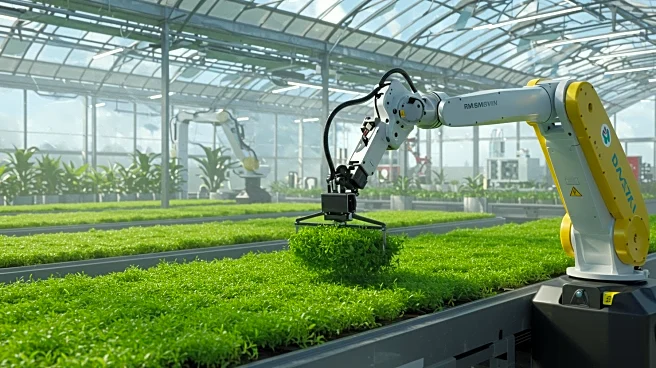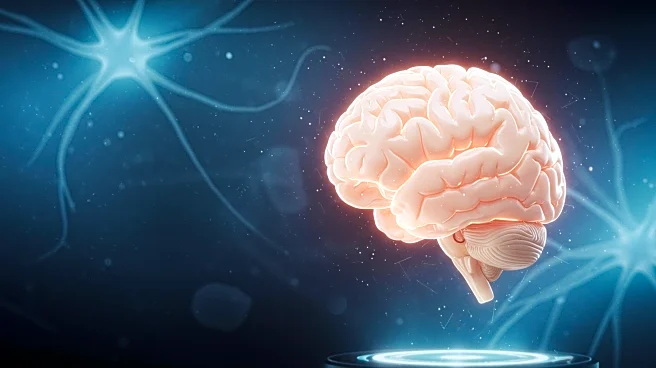What's Happening?
A recent study conducted by the University of Sheffield, in collaboration with Queen Mary University of London, has revealed how bees use their flight movements to enhance learning and recognition of complex visual patterns. This research, published in the journal eLife, demonstrates that bees can solve intricate visual tasks with minimal brain cells, suggesting that intelligence arises from the interaction between brains, bodies, and the environment. The study involved creating a digital model of a bee's brain, which showed how bees' movements during flight generate neural signals that help them efficiently identify features in their surroundings. This discovery could revolutionize artificial intelligence (AI) and robotics by suggesting that future robots could become smarter and more efficient by mimicking these natural processes.
Why It's Important?
The findings from this study have significant implications for the development of next-generation AI technologies. By understanding how bees use minimal resources to perform complex tasks, researchers can develop AI systems that are more efficient and require less computational power. This could lead to advancements in robotics, self-driving vehicles, and real-world learning applications. The study highlights the potential for AI to leverage natural intelligence designs, which could result in more sustainable and energy-efficient technologies. The research also contributes to the broader understanding of cognition and intelligence, challenging the notion that larger brains are necessary for complex problem-solving.
What's Next?
The study opens the door for further research into how natural intelligence can inform AI development. Future research may focus on applying these findings to create AI systems that can learn and adapt in real-time, similar to how bees process visual information. Additionally, the study's insights could influence the design of robotic systems that interact with their environments in more dynamic and efficient ways. Researchers may also explore how these principles can be applied to other areas of AI, such as machine learning and neural networks, to enhance their capabilities and efficiency.
Beyond the Headlines
This research underscores the importance of interdisciplinary collaboration in advancing technology. By combining insights from biology, neuroscience, and computer science, the study provides a comprehensive understanding of how intelligence can be modeled and applied in artificial systems. It also raises ethical considerations about the use of AI in society, particularly in terms of energy consumption and resource allocation. As AI technologies continue to evolve, it will be crucial to balance innovation with sustainability and ethical responsibility.











